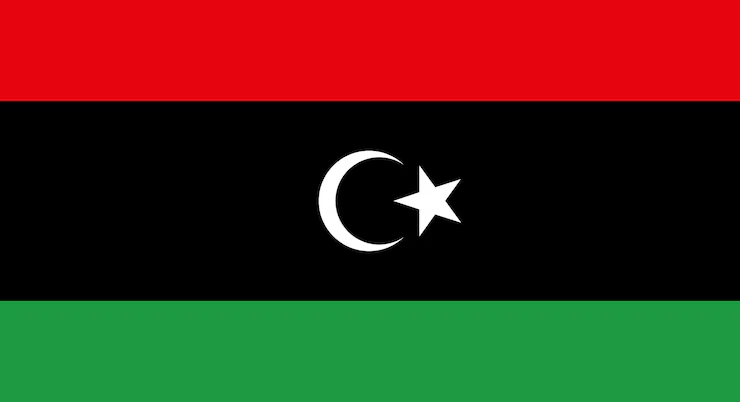Libya isn’t highlighted when it comes to fintech, but that doesn’t mean nothing’s happening. Underneath the surface of sanctions, political instability, and a fractured economy, there’s a slow but noticeable shift happening in how Libyans move money.
This is a country where cash still rules the streets, where trust in banks is thin, and where digital financial tools are only just starting to make a dent. But Libya’s payment rails are evolving and that evolution matters, not just for Libyans, but for anyone trying to do business in or with the country.
Whether you're trying to send money to family back home, build a startup, or tap into an emerging market, understanding the Libya payment rails is essential. From the slow-moving banking system to the rise of mobile wallets in Libya and the expansion of card and POS systems in Libya, this is a market trying to modernize under serious pressure.
This blog talks about Libya payment rails, Libya banking system, mobile money in Libya, card payments Libya, and financial infrastructure Libya.
Libya Payment Rails
To understand Libya’s financial system, you have to start with its payment rails. These are the tracks money runs on; whether it's moving between banks, flowing through mobile wallets, or swiped at a point-of-sale terminal.
Even in urban areas, cash is still the most trusted way to pay. Part of that comes down to the patchy performance of the Libya banking system, which has been crippled by years of internal conflict and mistrust. Most bank transfers go through the Central Bank of Libya’s national clearing system. While it’s technically functional, delays are common and there's a cap on how much you can move daily which is a huge friction point for businesses and consumers alike.
These are starting to create alternatives, but they don’t yet interoperate. Basically, one user on a mobile wallet can’t send money to another user on a different wallet. That limits utility and slows adoption. Card and POS systems in Libya have grown in recent years because of a push by the Central Bank of Libya to digitize payments. But hardware access is still limited, and cards are often only usable at certain local banks or networks.
The bigger issue? Most of Libya’s payment rails are siloed. You’ve got banks over here, mobile money in Libya over there, and not enough bridges in between. Add in weak internet infrastructure, power outages, and compliance bottlenecks, and you’ve got a financial ecosystem struggling to stay upright.
That’s why TransFi’s stablecoin-powered rails are such a game changer here. They don’t rely on any single bank or local payment processor. Instead, they use a network of over 250+ local methods, 40+ currencies, and AI-driven smart routing to identify the most cost-effective and fastest way to move money across borders. With instant settlement, best FX rates, and global compliance baked in, they sidestep many of the Libya fintech challenges entirely.
Libya Banking System
The Libya banking system is a story of institutional paralysis and slow modernization. It’s heavily centralized, overly dependent on outdated manual processes, and deeply affected by years of political fragmentation. Regardless, the banking sector still plays an important role in shaping Libya’s financial infrastructure.
The Central Bank of Libya (CBL) sits at the top, acting as the gatekeeper for all monetary policy, interbank settlements, and financial oversight. It controls liquidity, manages the dinar exchange rate, and maintains the national clearing system that banks use to settle transfers. Big players like Jumhouria Bank and the National Commercial Bank handle the majority of public deposits and business accounts. These institutions are often overstaffed, under-digitized, and hampered by internal bureaucracy.
Since the 2014 political split, Libya effectively has two parallel banking systems operating under different factions which is Tripoli in the west and Benghazi in the east. Though recent reconciliation efforts have made progress, there are still practical obstacles when moving funds between the two regions.
Access to credit is nearly nonexistent. With the Libya banking system still reeling from liquidity shortages and public mistrust, getting a business loan or even a functioning debit card is far from guaranteed.
What this really means is that most Libyans can’t rely on banks the way people in stable economies can. A bank account doesn’t necessarily give you access to online payments, easy transfers, or modern financial services. And that’s a big reason why digital payments in Libya remain stuck in first gear.
TransFi lets businesses and individuals bypass the limitations of the traditional Libya banking system and tap into stablecoin rails, as well as enables users to move money in and out of the country without dealing with FX restrictions, delayed settlements, or excessive fees.
Mobile Money in Libya
Mobile money in Libya has huge potential, but it’s still crawling compared to its neighbors. Despite being a promising workaround to the broken banking rails, adoption has been limited, slow, and fragmented.
But now a growing interest in mobile wallets in Libya can be seen, especially among younger, urban users. Platforms like Sadad, MobiCash, and Nafurah are trying to fill the gap left by failing banks. The Central Bank of Libya has signaled support by issuing regulations around e-money licenses, allowing telcos and private firms to enter the space. Additionally, peer-to-peer payments and bill pay features are attracting users frustrated by ATM lines and banking delays.
Here are some limitations:
- No interoperability. You can’t send money from one wallet provider to another, which makes mobile money in Libya clunky and siloed.
- Cash-in/cash-out is a bottleneck. People still need to visit physical agents or ATMs to load or withdraw funds. That defeats the purpose of digital payments in Libya and limits scalability, especially outside cities.
- Poor network coverage and power cuts. These kill real-time usage.
- Trust issues. Years of conflict and broken promises from state institutions have left Libyans cautious. Many still prefer cash because it feels safer, even if it’s inconvenient.
TransFi connects directly into 250+ local payment methods, including regional mobile wallets letting users move money into a mobile wallet in Libya directly from abroad, with instant settlement, low fees, and stablecoin rails ensuring the value doesn’t vanish with FX swings.
Also read about: Stablecoin Payments in Peru: Crypto On-Ramps for Remittances and Microbusinesses
Card Payments Libya
Card payments in Libya are on the rise, but growth is uneven and still limited by infrastructure gaps and public trust. Over the past few years, the Central Bank of Libya has pushed harder for financial inclusion and cash reduction by encouraging wider adoption of debit and prepaid cards. Policies have included fee waivers, import support for POS devices, and stricter controls on cash withdrawals. Government salary payments are increasingly routed to card-linked accounts which is forcing more people to open accounts and use cards for essential spending. POS terminals have also expanded, especially in Tripoli and Benghazi.
But limited card and POS acceptance is still a problem. Many businesses either don’t accept cards or don’t trust the reliability of POS devices as power outages, internet instability, and terminal costs all discourage broader usage. Additionally, card issuance is bank-dependent and since the Libya banking system is inconsistent, getting a card (especially in the eastern region) can still be a pain. Apart from that, most Libyan-issued cards are locked for domestic use only. That means e-commerce, international services, and cross-border transactions are completely cut off.
So, while card and POS systems in Libya are growing, they’re still not fulfilling their full potential. And more importantly, they don’t solve the problem of getting money into or out of the country efficiently.
TransFi lets unbanked users a way to access digital payments in Libya without needing full banking access. Instead of relying on domestic card rails limited by national networks and FX controls, TransFi uses stablecoin-powered cross-border rails. That lets users send and receive value directly.
Financial Infrastructure Libya
Libya’s financial infrastructure is a patchwork. Here are the core components of Libya’s financial infrastructure:
- Central Bank of Libya as the clearing engine. All interbank transfers, settlement, and liquidity controls are routed through the CBL. It acts as both the referee and the bottleneck. Its systems aren’t always online, and regional banking divisions still exist from the east-west political split.
- State-owned banks as system anchors. These institutions dominate Libya's financial system but operate with outdated tech stacks, limited automation, and weak API infrastructure. That slows everything down.
- No national digital identity system. KYC is manual and inconsistent. Many Libyans don’t have a verifiable, digital way to prove their identity, which creates massive friction for onboarding to any modern platform be it banking, mobile wallets, or otherwise.
- No real-time payment rails. Libya lacks the equivalent of a 24/7 instant payment system like SEPA Instant or PIX in Brazil. This means transactions, especially interbank ones, are subject to delays that can last hours or even days.
All this matters because without reliable infrastructure, financial services can’t scale. Rural areas are particularly left out, with limited bank branches, no agent networks, and little mobile money support. Financial inclusion in Libya is stalling, developers are flying blind, and digital payments in Libya still remain niche.
Conclusion
Libya’s financial system is a contradiction. On one hand, there’s a clear hunger for better tools: faster payments, more reliable transfers, less cash dependence. On the other, the rails; whether banking, mobile money, or cards just aren’t there yet. They’re outdated, fragmented, and weighed down by political divisions and structural inefficiencies.
The Libya banking system still runs on legacy processes. Mobile money in Libya shows promise but lacks interoperability. Card and POS systems in Libya are growing, but they can’t handle cross-border needs. And the financial infrastructure in Libya as a whole lacks the connectivity and trust needed to support real financial inclusion.
The real solution is new rails altogether which lets individuals and businesses bypass the broken layers while still plugging into the parts that work. By using stablecoin-powered payment infrastructure, TransFi makes cross-border money movement into and out of Libya not just possible, but reliable. With instant settlement, enterprise-grade security, global compliance, and AI-driven routing, TransFi offers a better way forward.
FAQs
1. How do payments work in Libya and what are the best cross-border payment solutions?
Digital payments in Libya rely on outdated rails, slow banks, and siloed mobile wallets. Libya fintech challenges make stablecoin rails like TransFi the best option. It bypasses delays, integrates Libyan electronic payments, and avoids Central Bank of Libya restrictions.
2. What is the current mobile money adoption in Libya?
Mobile wallets in Libya are growing, but adoption is slow due to trust issues and lack of interoperability. Digital payments in Libya remain limited, and Libya fintech challenges persist despite Central Bank of Libya support for Libyan electronic payments.
3. Why are card and POS systems in Libya growing?
The Central Bank of Libya is pushing card use to modernize Libyan electronic payments. Despite growth, digital payments in Libya face limits due to poor infrastructure and unresolved Libya fintech challenges, making mobile wallets in Libya more appealing.
4. What are the challenges of digital banking in Libya?
Digital payments in Libya suffer from unreliable systems, weak APIs, and low trust in banks. Challenges of digital banking in Libya include poor UX, limited access to mobile wallets in Libya, and slow reforms from the Central Bank of Libya.
5. Why are stablecoins driving financial inclusion in Libya?
Stablecoins cut through Libya fintech challenges by powering instant digital payments in Libya. With no reliance on banks, they reach mobile wallets in Libya directly.
Table of Contents
Suggested Article
Explore our products

Make global payments at the speed of a click

Accept payments, remove borders.

Unlock Seamless Digital Currency Transactions Anywhere








.png)














